12 Story Twists More Shocking Than a Hitchcock Thriller

A study published in 2013 showed that dolphins and humans had one little thing in common — apart from being mammals — they have names! In particular, bottlenose dolphins, which have their own special whistles, just like human names. Not only do they develop this type of whistle to present themselves to other dolphins, but they can also learn other “names” so that they can better communicate with one another.
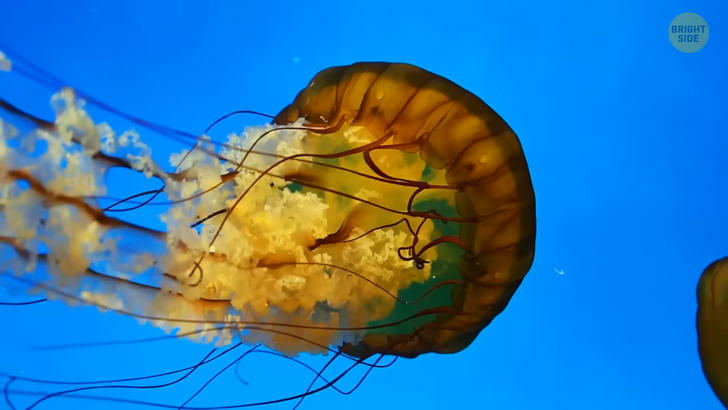
A mysterious singing whale hides in the depths of the Pacific Ocean, which scientists have yet to fully comprehend. They call it the Loneliest Whale because it emits a sound at a way higher pitch than any other blue whale we’ve ever seen before. It’s never been seen, though, so researchers believe this strange tune may be keeping the animal from actually finding a partner. By the way, blue whales have one interesting feature: their hearts are larger than a gorilla! Just to paint you a better picture, your heart should be roughly the size of your fist.
The only creature that might actually live forever hides in the depths of the ocean, too. It’s the tiniest of jellyfish. It’s even smaller than the nail on your pinky, but it does appear to be the living embodiment of Benjamin Button! It’s somehow evolved an insane ability to go back to a previous stage of development. But these creatures can only trigger this mechanism when they are in danger or extremely hungry. Obviously, they got the nickname “the immortal jellyfish.” We’re yet to pinpoint how these animals manage to produce cells that regress and regrow. But it could help advances in medicine for both animals and humans.
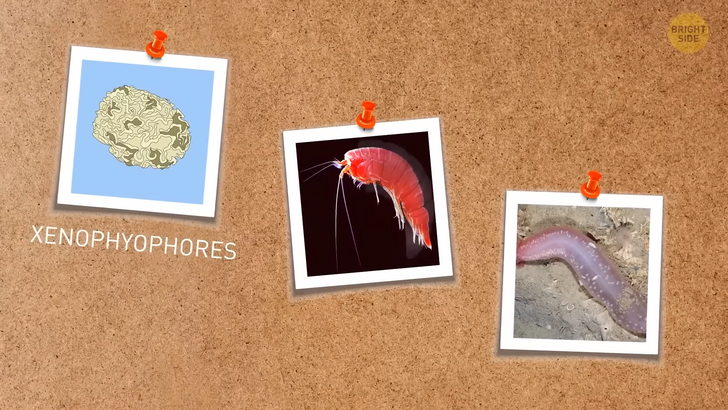
The Mariana Trench in the Pacific Ocean is the deepest point on Earth. That we know of, at least! You can imagine there’s literally no sunlight here, so resources there are very scarce. What kind of creatures can live here, and how do they survive, given the harsh environment? You’ll be amazed to find out that there’s quite an abundance of wildlife in the Mariana Trench. The most common creatures found here are xenophyophores, amphipods, and small sea cucumbers.
Amphipods have adapted by hardening up their shell, using aluminum gathered from the seawater. Smaller creatures, like microbes, adapted by feeding on the chemicals emitted when the seawater hits underwater rocks. The Mariana snailfish is thought to be the rock star of the area. These creatures are small — the biggest ones are as long as a standard smartphone — translucent, and lacking any scales. But they’re the top predator of the area.
The scientific community has recently recognized the fifth body of water, apart from the Pacific, Atlantic, Indian, and Arctic Oceans. It’s called the Southern Ocean, and it is surrounded by three of the four original oceans. You can’t help but wonder what mysterious creatures does it hide? Turns out thousands of species of wildlife live there and nowhere else in the world.

Let’s start with the quirky sea pig. There are a lot of them in the waters off Antarctica. Why is it called this, though? Because of its pink hue and round, bloated looks. It even appears to have a little tail and a set of ears. Just like a pig! They do help a lot with the quality of the water here, filtering sand and sediment.
Apart from living underwater, octopuses and squid share one more characteristic that sets them apart from other sea creatures. They have three hearts. It doesn’t necessarily make them more romantic, but they do need these 3 hearts to function properly. They have one main heart that helps with blood circulation, as well as two branchial hearts that are responsible for pumping blood near the gills. They’re also pretty intelligent and social creatures.
Recent research that included studying footage of octopuses living underwater shows they sometimes develop this unusual behavior. They seem to throw things at one another on purpose. It can be anything from dirt from the bottom of the sea to shells or rocks. The reason why they do that is still up for debate. But most scientists believe it’s to protect their personal space. Octopuses are known to be solitary creatures, so when something — or someone, like an underwater camera operator — is too close to them, they lash out.
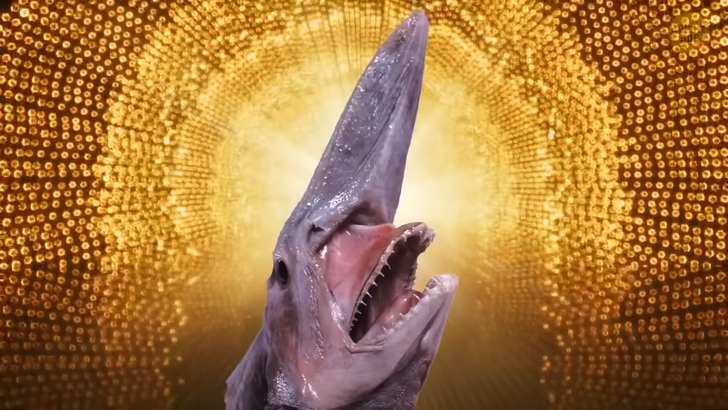
Not that we aren’t a bit intimidated by sea creatures already, but just so you know, sharks can sometimes grow thousands of teeth. And not just one or two thousand. Up to 30,000 teeth over their lifetime, to be precise. I wouldn’t want to be a shark’s dentist, that’s for sure! Looking for a creature to enter a beauty pageant? Might want to skip the goblin shark.
In fact, it’s often called the ugliest creature on Earth, poor thing. Mostly because of its long snout, which resembles a sword. In fact, these animals use this body part to seek out prey. It works like an antenna, which catches the movements of surrounding creatures. Once they figure out the position of their lunch, they grab it pretty fast with their monstrous set of teeth.
The blobfish isn’t a pretty picture, either. It’s often described as the face of a half-melted human. Weirdly enough, it even has some sort of facial features, which makes it look like it has eyes, a mouth, and even a nose. You’ll find this fish species in deep waters off the coast of Australia and New Zealand.
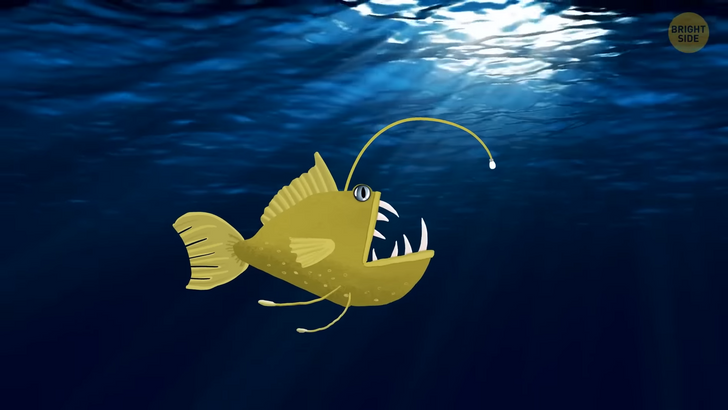
The anglerfish is so strange it was even featured in movies! It’s often found in the darkest regions of the ocean because it’s perfectly equipped to navigate these areas. Mostly because of a special organ which helps them navigate a pitch-black environment. It’s called the esca, and it acts like a lantern attached to their head — sort of how miners use lighted helmets to walk in caves.
It glows because of a special form of bacteria producing bioluminescence. This bioluminescence thing basically translates to an organism’s ability to emit its own light. Chemistry has a lot to do with it. Animals with this insane ability use two chemicals, one called luciferin and the other called luciferase. Add in a bit of oxygen between these two, and voilà: you have light!
Deep under the Indian and western Pacific oceans lives the peacock mantis shrimp. At first glance, you might believe it’s a cute creature, all sweet and candy-colored. But don’t be fooled. This little critter can throw a punch. Literally! They are known to slow down their prey by “punching” it with their two front appendages. This shrimp’s punch is one of the fastest movements ever seen in the animal kingdom. It might even be strong enough to crack an aquarium’s glass wall, so don’t go looking for one of these as a pet.
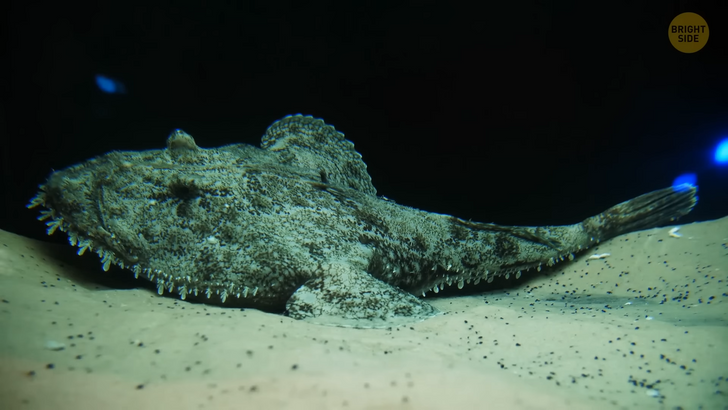
The vampire squid is neither a squid nor a vampire. So why the name? Sure, it does look like a squid at first glance, but wildlife specialists have determined that the vampire squid is a totally different animal, even though it has eight arms and two tentacles. As for the vampire part, they really don’t prey on any animal blood. They’re more of passive hunters. They got this unusual name because of the skin they have between their arms, which looks like a cape. Yes, it does.
The black swallower fish is an expert on grabbing lunch and something to go for later when hunting at the bottom of the sea. That’s because it’s developed an ability to swallow prey way bigger than itself. It has an extendable gut attached to its belly, which acts like a “to-go” container. These animals need this cool feature because they spend most of their time in really deep waters where food can be scarce. I can see where that would come in handy.
The Whitemargin stargazer is a weird fish with equally strange behavior. You can often see it in sandy lagoons in coastal waters. It tends to hide itself almost completely in the sand. The weird part? It leaves its mouth and eyes out — and that’s not a pretty picture. It does this to better ambush its prey. As for its name, it got the word “stargazer” added there because it looks as if the creature is lying on its back, just looking at stars! Don’t be fooled, though; this fish ain’t no poet. It features electrical organs behind its eyes that can discharge a real shock.











